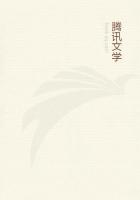We have now to consider the remaining homogeneous parts, and will begin with flesh, and with the substance that, in animals that have no flesh, takes its place. The reason for so beginning is that flesh forms the very basis of animals, and is the essential constituent of their body. Its right to this precedence can also be demonstrated logically. For an animal is by our definition something that has sensibility and chief of all the primary sensibility, which is that of Touch; and it is the flesh, or analogous substance, which is the organ of this sense. And it is the organ, either in the same way as the pupil is the organ of sight, that is it constitutes the primary organ of the sense; or it is the organ and the medium through which the object acts combined, that is it answers to the pupil with the whole transparent medium attached to it. Now in the case of the other senses it was impossible for nature to unite the medium with the sense-organ, nor would such a junction have served any purpose; but in the case of touch she was compelled by necessity to do so. For of all the sense-organs that of touch is the only one that has corporeal substance, or at any rate it is more corporeal than any other, and its medium must be corporeal like itself.
It is obvious also to sense that it is for the sake of the flesh that all the other parts exist. By the other parts I mean the bones, the skin, the sinews, and the blood-vessels, and, again, the hair and the various kinds of nails, and anything else there may be of a like character. Thus the bones are a contrivance to give security to the soft parts, to which purpose they are adapted by their hardness; and in animals that have no bones the same office is fulfilled by some analogous substance, as by fishspine in some fishes, and by cartilage in others.
Now in some animals this supporting substance is situated within the body, while in some of the bloodless species it is placed on the outside. The latter is the case in all the Crustacea, as the Carcini (Crabs) and the Carabi (Prickly Lobsters); it is the case also in the Testacea, as for instance in the several species known by the general name of oysters. For in all these animals the fleshy substance is within, and the earthy matter, which holds the soft parts together and keeps them from injury, is on the outside. For the shell not only enables the soft parts to hold together, but also, as the animal is bloodless and so has but little natural warmth, surrounds it, as a chaufferette does the embers, and keeps in the smouldering heat. Similar to this seems to be the arrangement in another and distinct tribe of animals, namely the Tortoises, including the Chelone and the several kinds of Emys. But in Insects and in Cephalopods the plan is entirely different, there being moreover a contrast between these two themselves. For in neither of these does there appear to be any bony or earthy part, worthy of notice, distinctly separated from the rest of the body. Thus in the Cephalopods the main bulk of the body consists of a soft flesh-like substance, or rather of a substance which is intermediate to flesh and sinew, so as not to be so readily destructible as actual flesh. I call this substance intermediate to flesh and sinew, because it is soft like the former, while it admits of stretching like the latter. Its cleavage, however, is such that it splits not longitudinally, like sinew, but into circular segments, this being the most advantageous condition, so far as strength is concerned. These animals have also a part inside them corresponding to the spinous bones of fishes. For instance, in the Cuttle-fishes there is what is known as the os sepiae, and in the Calamaries there is the so-called gladius. In the Poulps, on the other hand, there is no such internal part, because the body, or, as it is termed in them, the head, forms but a short sac, whereas it is of considerable length in the other two; and it was this length which led nature to assign to them their hard support, so as to ensure their straightness and inflexibility; just as she has assigned to sanguineous animals their bones or their fish-spines, as the case may be. To come now to Insects. In these the arrangement is quite different from that of the Cephalopods; quite different also from that which obtains in sanguineous animals, as indeed has been already stated. For in an insect there is no distinction into soft and hard parts, but the whole body is hard, the hardness, however, being of such a character as to be more flesh-like than bone, and more earthy and bone-like than flesh. The purpose of this is to make the body of the insect less liable to get broken into pieces.














